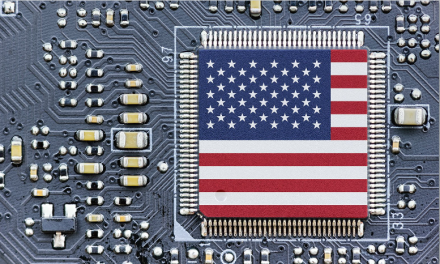EMSNOW Analyst Inteview: Ron Keith, Supply Chain Resources Group (SCRG) on Tariffs

The industry is concluding that tariffs will not be going away anytime soon. This realization is having a direct impact on costs of electronics manufacturing. We spoke to Ron Keith, founder and executive director of Supply Chain Resources Group (SCRG) to learn more about the implications of this new reality. Supply Chain Resources Group, is a managed services company that helps OEM clients design, implement, and manage global supply chains.
 EMSNOW: What impacts are trade tariffs having on OEMs manufacturing in China? What do you see as their general reaction to the tariffs? What portion of the OEMs you work with are adopting a “wait and see” strategy vs. taking some action sooner?
EMSNOW: What impacts are trade tariffs having on OEMs manufacturing in China? What do you see as their general reaction to the tariffs? What portion of the OEMs you work with are adopting a “wait and see” strategy vs. taking some action sooner?
There have really been two types of reactions; (1) the wait and see camp, and (2) we need to take action camp. If I look across our OEM client base, about 35% are taking action while the rest continue to be in wait and see mode.
EMSNOW: What factors influence their decision to adopt one course vs. the other?
Those customers taking action run the gambit from consumer electronics companies to industrial equipment companies and everywhere in between. We certainly see some negative correlation between those companies that are acting quickly and the product gross margins that they realize relative to what other firms in the same industry are earning. Firms with less room on the margin, or that have products that have a high substitution effect, seem to be acting more quickly than their industry peers. Beyond that it seems to be about how senior management at the different companies view the situations and the likelihood and potential timing of a favorable resolution to the trade issue.
EMSNOW: Where do you see your clients moving to?
We see a little bit of everywhere, but the two clearest winners are Vietnam and Mexico in roughly equal proportion. We are very aggressively ramping up our supply chain management execution staff in Hanoi to handle the rapid influx of American OEM products that were until recently built in China. To a lesser extent we also see some customers moving to Malaysia and Thailand, although most of the large EMS providers in Malaysia are struggling with capacity constraints.
EMSNOW: What are the best manufacturing alternatives for the OEMs looking to shift out of China? Do they have to move all their production?
If you can tell me how the trade dispute ultimately plays out, I can tell you the best alternatives for various companies and products. But seriously, right now, the big push is on moving final assembly and test (FAT) to a low cost, low tariff location. Most of our clients and prospective clients are leaving PCBA in China for now, because so many of the components in the PCBA tend to come from China anyway. But if a 25% tariff level becomes the new norm, you will see a lot of PCBA as well as mechanicals relocate as well.
EMSNOW: Can you compare/contrast Mexico as an alternative vs. other Asian locales?
Prospective clients are always asking me “where is the best location to manufacture outside of China”, to which I always respond “it depends on a lot of factors – there is no single best location for all companies and all products”. Mexico obviously has the advantage of proximity to the US, and in some ways the cultural distance between the US and Mexico is less, than the cultural distance between the US and China or other Asian countries. For example, on the cultural dimension of individualism, Mexico is much closer to the US than is China or Vietnam. Whereas on the cultural dimension of uncertainty avoidance, China and Vietnam are both much closer to the US than is Mexico. The cultural distance between two countries is a pretty good indicator of how difficult it is to manage supplier relationships between the two countries.
From a cost perspective, Vietnam is actually cheaper than China, whereas Mexico, after last Friday’s dramatic move in the Peso, is roughly on par with China from a cost perspective. But neither country has the direct or indirect labor productivity of China and this can cause OEMs to underestimate the ramp up time for relocated production in one of these new locations. Vietnam has a very young and growing workforce and decent labor availability, despite the official unemployment rate of about 2.1%. Malaysia has an unemployment rate of about 3.6%, which sounds a lot better if you are looking to hire in region, until you realize that the Malaysia workforce is less than 1/3rd the size of Vietnam, which has the 11th largest labor force in the world, just ahead of Mexico which is the 12th largest. Many factories in Malaysia have resorted to bringing in labor from Nepal and other countries to staff production lines, a job that many Malaysians shun.
EMSNOW: How costly is it to move production?
The number varies widely by product type, volume and especially product mix. But in general, relocating $40M to $50M of electronics production costs about 6% of the annual production spend, so $2.5M to $3M. For our larger customers that have single product families that run $100M or more in annual spend, that number is closer to 3.5% to 4%.












